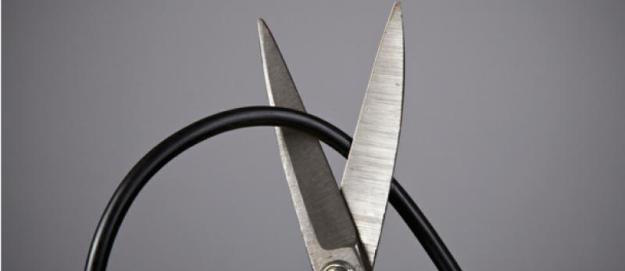Basics: The Ideal Cord-Cutter Setup
The marketplace for entertainment is changing fast. A large number of people are moving away from cable television, and looking for lower-cost alternatives. They want the flexibility of seeing TV shows and movies on their terms, but also want a better selection than the cable television providers offer. This article is for you, cord-cutter. Here is what I consider the ideal path to killing that ongoing cable TV package.
The Basics:
#1 – Television
Given most televisions support HDMI (and some even support VGA or DVI), look for a television that fits your budget while supporting the least HDMI output. In most cases buying a sub 47″ television with HDMI support alone will allow you to reduce television costs considerably. Naturally, you’ll want the biggest TV you can afford. Check your current television first as it may include an HDMI port. We might suggest something like the LG Electronics 50LF6000 LED TV.
#2 – Computer
This computer doesn’t need to be a top-of-the-line model. In fact, as long as it has an HDMI port (to connect to your television), you can use a lower-cost laptop and netbooks. For some cheaper computers, however, you’ll have more difficulty playing high-definition video, so try to get the most performance for what you spend. Look to a current laptop and test it by playing high definition video of a flash drive to ensure it works. I recently reviewed the Intel Compute Stick and it shows great promise.
#3 – High-Speed Internet Connection
No dial-up connections allowed here! You’re going to need a good speed connection to stream movies over the Internet, and pay close attention to your bandwidth cap. If possible, get a connection with unlimited downloads.
#4 – Content Subscriptions and Patience
At first, you’re going to start with a Netflix subscription at $9 a month. You’ll be surprised at the amount of content, but it still won’t quite be enough. You’ll venture out into Hulu and Youtube Movies looking for free-content but perhaps want more. Hulu Plus ($8 a month) offers more content, and Youtube will let you rent current movies. HBO and Showtime are also in or are getting into online streaming. Sporting events will be within your grasp via subscriptions such as MLB.TV (though blackout restrictions will be a pain). You may start renting and downloading content from iTunes. Your computer will also be great for listening to streaming services such as your local radio station’s website or Spotify. Every day, you’ll find new ways to get content and this list will change regularly. Now is a great time to cancel that cable tv package.
Optional enhancements to your experience:
NAS Device
A natural extension of your cord-cutting experience is going to be downloading content. This doesn’t necessarily have to be pirated music or movies. You’ll have the option of downloading offline content from several movie sites. If you are building a library of your own recorded movies, you’ll also need to store that somewhere. Once you start storing media, the computer you use for streaming may become over-taxed, and that’s where a Network Attached Storage (NAS) device comes in. The idea is to fill a box full of drive storage and put that storage on your network. The great thing is all the media you store here will be available to every device on your network. I might recommend the Seagate 2-Bay 4TB NAS as a starting point.
Wireless Keyboard and Mouse
As you move to the couch, you’ll need to control the computer better. You can continue to get up and walk to it, but there are a number of other ways to do this from a distance. The ideal setup is reasonably priced, works at a great distance and uses only one USB port for the keyboard and mouse. I’ve tried lots of smaller options, but the full keyboard and mouse are always the best. I might recommend the Microsoft Wireless Desktop 3000.
As time goes on, I’ll update this with new information. I’d love to hear about your experiences. Do you think an Apple TV setup is better? Is there something new you’d suggest? Let me know why in the comments. Now is the time to share what works (and doesn’t work) for you.


